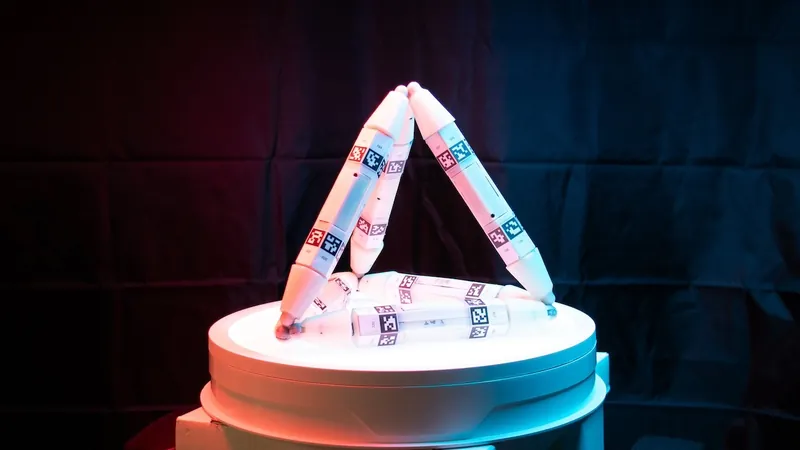
Unveiling the Universe: Rubin Observatory's Stunning First Images
2025-07-01
Author: Emma
A Cosmic Breakthrough!
The Vera C. Rubin Observatory has burst onto the astronomical scene, unveiling its very first breathtaking images of the cosmos. This significant milestone paves the way for profound explorations into the mysteries of our universe.
State-of-the-Art Technology at Cerro Pachón
Perched atop Cerro Pachón in Chile, this groundbreaking observatory is a collaboration between the U.S. National Science Foundation (NSF) and the Department of Energy (DOE). It's designed to revolutionize our comprehension of the cosmos.
In a lightning-fast ten hours of preliminary tests, the observatory has already recorded millions of stars and galaxies, along with thousands of previously hidden asteroids.
Possessing the Universe's Most Powerful Telescope
The Rubin Observatory boasts the most sophisticated optical telescope to date. Its colossal 8.4-meter telescope features the world's largest digital camera and an innovative data processing system designed to handle an astronomical flood of information.
Anticipated to commence full scientific operations in 2025, the observatory's flagship project, the Legacy Survey of Space and Time (LSST), aims to scan the entire visible Southern Hemisphere sky every few nights over the next decade. This endeavor promises a stunning, high-resolution time-lapse portrait of the night sky unlike any we've witnessed before.
Chasing Cosmic Mysteries
A fundamental aim of the Rubin Observatory is to shed light on some of the universe's most perplexing enigmas. This includes probing the elusive nature of dark matter and dark energy, which together constitute about 95% of the universe yet remain shrouded in mystery.
The observatory's regular and detailed observations will yield crucial data to refine our scientific models of galaxy formation and evolution and to explore the expansion of the universe, potentially uncovering new cosmic phenomena.
Guardians of the Solar System
Beyond deep space, Rubin Observatory will also enhance our understanding of the solar system. Its nightly scans will unveil millions of asteroids, comets, and even interstellar objects, many of which have yet to be discovered.
This immense observational capacity positions Rubin as the ultimate tool for discovering celestial bodies, vital for planetary defense strategies that can flag asteroids or comets posing future threats to Earth or the Moon.
A Data Revolution
Expect the observatory's data output to eclipse the combined total from all previous optical observatories within its first operational year. Over its decade-long lifespan, Rubin will create a treasure trove of astronomical data.
This wealth of imagery and insights will be made publicly accessible, fostering collaboration between professional astronomers and citizen scientists, as well as educators around the globe.
A Tribute to a Pioneer
Named in honor of renowned astronomer Vera C. Rubin, who was instrumental in providing compelling evidence for dark matter, this observatory stands on the brink of ushering in a new era of astronomical discovery.









 Brasil (PT)
Brasil (PT)
 Canada (EN)
Canada (EN)
 Chile (ES)
Chile (ES)
 Česko (CS)
Česko (CS)
 대한민국 (KO)
대한민국 (KO)
 España (ES)
España (ES)
 France (FR)
France (FR)
 Hong Kong (EN)
Hong Kong (EN)
 Italia (IT)
Italia (IT)
 日本 (JA)
日本 (JA)
 Magyarország (HU)
Magyarország (HU)
 Norge (NO)
Norge (NO)
 Polska (PL)
Polska (PL)
 Schweiz (DE)
Schweiz (DE)
 Singapore (EN)
Singapore (EN)
 Sverige (SV)
Sverige (SV)
 Suomi (FI)
Suomi (FI)
 Türkiye (TR)
Türkiye (TR)
 الإمارات العربية المتحدة (AR)
الإمارات العربية المتحدة (AR)